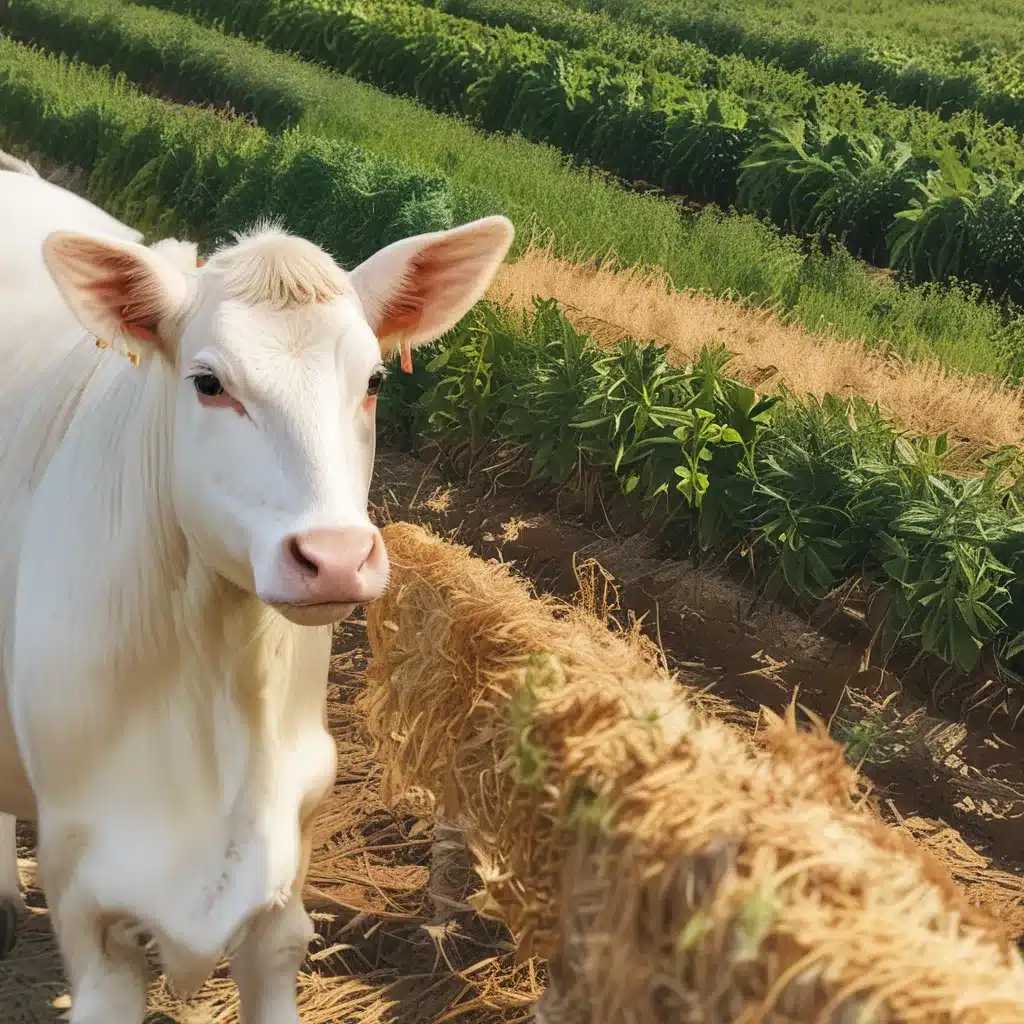
Discovering the Power of Integrated Farming
As I strolled through the lush fields of Thornapple CSA, the gentle breeze carried the scent of freshly turned soil and the faint clucking of contented chickens. This scene was a far cry from the industrialized, compartmentalized farms I had grown up with. Here, the lines between crops and livestock blurred, creating a symphony of nature that captivated me.
It was during my visit to Thornapple that I first learned about the concept of integrated farming – the harmonious union of livestock and crops. This holistic approach, I discovered, held the key to unlocking maximum yields while preserving the delicate balance of our ecosystems. As I delved deeper, I found myself entranced by the intricate web of relationships that thrived within these integrated systems.
Unlocking the Potential of Integrated Farming
The driving force behind integrated farming, as I soon learned, is the principle of symbiosis. By carefully orchestrating the interactions between livestock and crops, farmers can create a self-sustaining ecosystem that optimizes resource utilization and minimizes waste.
“It’s all about harnessing the natural synergies that exist in nature,” explained Sarah, the head farmer at Thornapple. “We don’t see our animals and our crops as separate entities, but rather as interdependent components of a greater whole.”
One of the most striking examples of this synergy is the role of livestock in nutrient cycling. As animals graze on the land, their manure is deposited, providing a rich source of organic matter and essential nutrients for the soil. This not only enhances the fertility of the land but also reduces the need for synthetic fertilizers, a win-win for both the environment and the bottom line.
Recent studies have shown that integrated farming systems can lead to significant improvements in soil health, biodiversity, and overall productivity when compared to traditional monoculture approaches. By integrating livestock and crops, farmers can create a closed-loop system that minimizes waste and maximizes the efficient utilization of resources.
The Art of Integrating Livestock and Crops
Implementing an integrated farming system requires a delicate balance and a deep understanding of the intricate relationships between different elements of the ecosystem. At Thornapple, I witnessed firsthand the meticulous planning and execution that went into this process.
“It’s not just about throwing a few chickens into the vegetable patch and calling it a day,” Sarah chuckled. “There’s a lot of thought and consideration that goes into designing an integrated system that works for our specific needs and the local environment.”
One of the key considerations is the complementary nature of the livestock and crops. For example, at Thornapple, the farmers have strategically incorporated grazing animals like sheep and goats into their vegetable production. These animals not only provide a natural source of fertilizer but also help to control weeds and maintain the optimal balance of vegetation.
Similarly, the integration of poultry has proven to be a valuable addition to the farm. The chickens and turkeys not only contribute to the nutrient cycle but also play a crucial role in pest management, consuming harmful insects and reducing the need for chemical interventions.
The livestock-crop integration at Thornapple extends beyond the obvious benefits of nutrient cycling and pest control. Sarah shared how they have also strategically designed their pastures and grazing patterns to complement the growth cycles of their vegetable crops, ensuring that the land is optimally utilized throughout the year.
Overcoming Challenges and Embracing Diversity
Of course, integrating livestock and crops is not without its challenges. As I learned, it requires a deep understanding of the complex interplay between different elements of the ecosystem and a willingness to adapt to changing conditions.
“One of the biggest hurdles we’ve had to overcome is the need for specialized knowledge and skills,” Sarah admitted. “Transitioning from a traditional monoculture approach to an integrated system requires a significant shift in mindset and a commitment to continuous learning.”
The farmers at Thornapple have invested heavily in training and education, collaborating with researchers and experts to stay ahead of the curve. They have also embraced the power of diversity, incorporating a wide range of livestock and crop varieties to build resilience and mitigate the risks associated with unpredictable weather patterns and pest infestations.
Recent studies have highlighted the importance of diversification in integrated farming systems, as it helps to foster a more balanced and adaptable ecosystem. By incorporating a diverse array of plants and animals, farmers can create a self-regulating system that is better equipped to withstand the challenges posed by a changing climate and evolving pest populations.
The Rewards of Integrated Farming
As I walked through the lush fields of Thornapple, I couldn’t help but be in awe of the abundance and vitality that permeated every corner of the farm. The vegetables seemed to burst with flavor, the livestock appeared healthy and content, and the entire ecosystem hummed with the vibrant energy of a thriving, interconnected community.
“The rewards of integrated farming go far beyond just the tangible yields,” Sarah remarked, her eyes sparkling with pride. “It’s about creating a resilient, self-sustaining system that brings us closer to the land and the natural cycles that sustain us.”
Indeed, the benefits of integrated farming extend far beyond the realm of pure productivity. By embracing the principles of symbiosis and diversity, farmers like those at Thornapple are able to reduce their reliance on external inputs, minimize their environmental footprint, and cultivate a deep sense of connection with the land and the living organisms that call it home.
As I bid farewell to Thornapple, I knew that I had witnessed something truly special – a shining example of how the integration of livestock and crops can unlock the full potential of sustainable agriculture. It was a testament to the power of working in harmony with nature, a reminder that the path to a more resilient and abundant future lies in the delicate balance of our natural systems.



